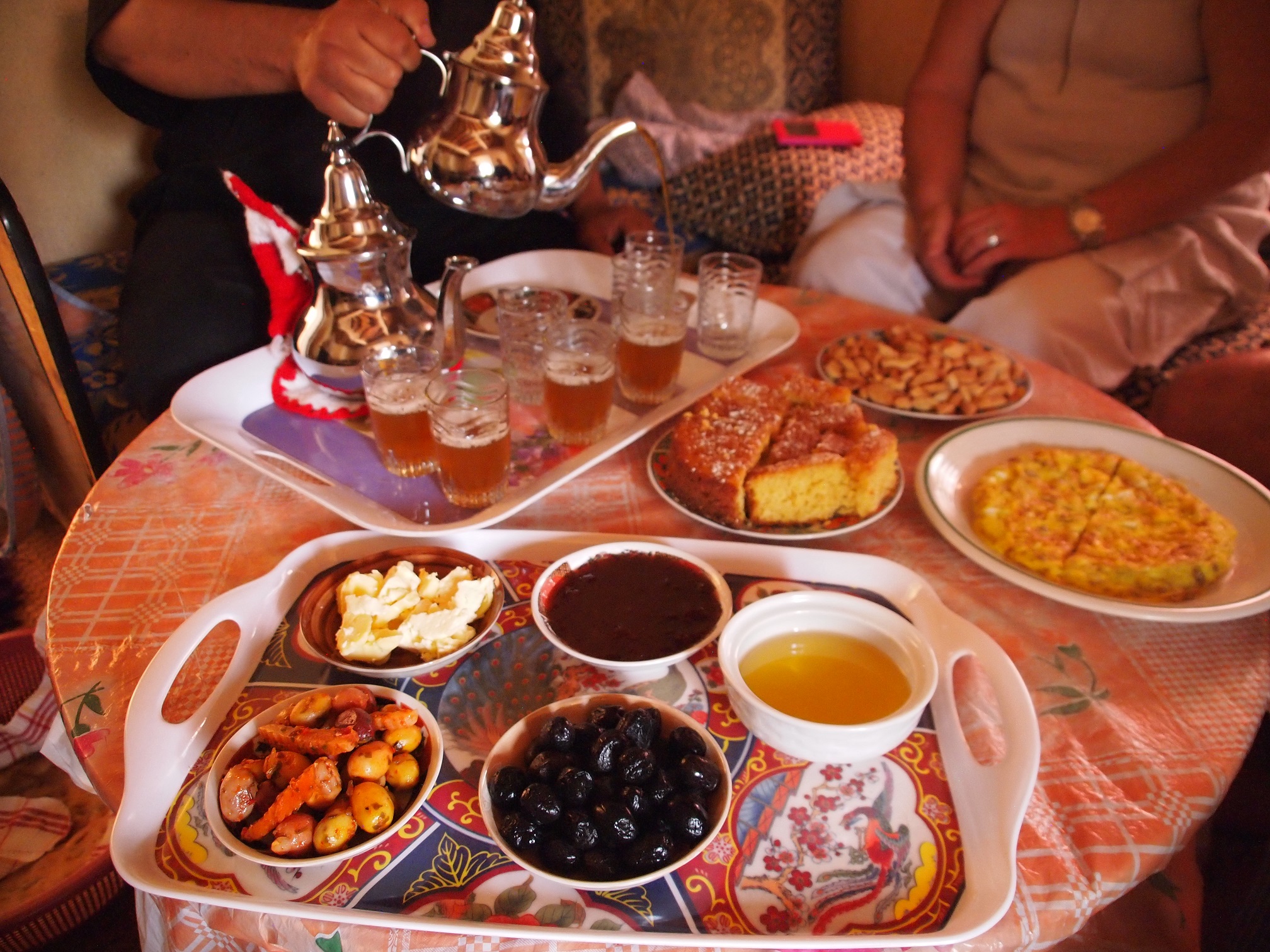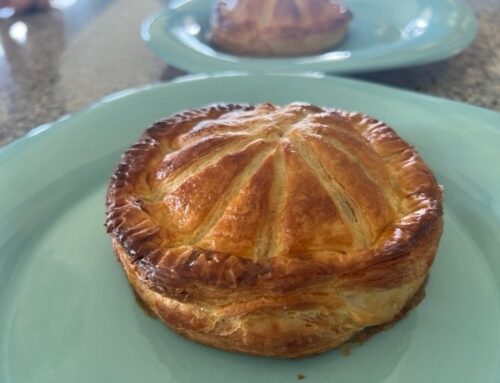Mint tea is an integral part of Moroccan life and the Moroccans drink it all day – at the beginning of the meals and as a welcome to guests. It is often served with little pastries, cakes and biscuit treats.
In the Berber villages they tend to use just one mint, we often used a few, plus other herbs of your choice. I actually enjoyed it with a couple of mints only.
It is a refreshing and delightfully flavoured tea which is very well suited to the hot Moroccan climate. I am not especially fond of mint; however, I loved this tea.
Moroccan tea is always prepared in front of the guests and it is the custom, that when both men and women are present, for the man to pour the tea! One day we waited 1½ hours for the head of the household to return from the Friday prayers to pour our tea and start our lunch!
Tea is traditionally served alone during the day, however, at breakfast, lunch and dinner it may be accompanied by a small pastry.
Some of the teas we were served did not have sugar added to the brew, so we needed to add it later. This is not usually the preferred method as the sugar has not been infused into the mint flavour.
The tea
To make it you will need a heavy, flat bottomed Moroccan teapot for sitting on the stove.
2½ tbsp gunpowder green tea
250ml boiling water
3 handfuls of fresh mints and herbs, such as mint, peppermint mint, spearmint, wild mint, marjoram, lemon verbena and rose pelargonium.
2½ tbsp of large sugar cubes – we use the same amount of sugar as we do the tea
½ tsp rosewater
Kettle of boiling water
2 water glasses
8 Moroccan tea glasses
Place the tea leaves into the teapot. Pour the boiling water into one of the water glasses and pour the water onto the tea in the pot and allow it to stand for 3 minutes, with the teapot lid closed. After the 3 minutes, pour the cup of tea into the water glass and set aside.
Fill another water glass with boiling water, and pour it into the teapot; swirl it around vigorously, for a minutes, to wash the tea and then pour the water out back into the water glass and discard as this makes the tea bitter. Notice the difference between these first and second glasses – the first glass is clear and fresh looking, whereas the second is cloudy, black and dirty. Repeat this twice, ‘washing’ the tea around each time.
Return the reserved, first good cup of tea back into the pot and fill the pot to just below the neck, with boiling water and place the teapot back on the stove, with the lid off, and heat gently until the leaves come to the top – do NOT allow the tea to boil, so keep an eye on it. This takes about 2 minutes.
‘Wake up the herbs’ by twisting them until they break to release their oils; add them to the pot. Place the sugar cubes on top of the herbs and gently push down a little. The sugar is an integral part of the tea making as the sugar ‘quietens’ any remaining bitterness in the tea and ‘wakes up’ the herbs.
You are now ready to serve.
To pour the tea, the teapot is held high above the cup, about 50cm, and so your aim must be good. This also aerates the tea and results in froth and bubbles on the top of the glass, like a frothy collar, indicating that the tea is freshly made. Pour off one cup of tea and return it to the pot; repeat this 2 more times returning each cup to the pot.
Now you are ready to serve the tea to your guests. Pour the tea, again from a height, into the Moroccan glasses for your guests.
Pour off one cup of tea and return it to the pot; repeat this 2 more times returning each cup to the pot.
Moroccan tea is always prepared in front of the guests and it is the custom, that when both men and women are present, for the man to pour the tea! One day we waited 1½ hours for the head of the household to return from the Friday prayers to pour our tea and start our lunch!
Tea is traditionally served alone during the day, however, at breakfast, lunch and dinner it may be accompanied by a small pastry.
Some of the teas we were served did not have sugar added to the brew, so we needed to add it later. This is not usually the preferred method as the sugar has not been infused into the mint flavour.
- Pretty mint tea pots
- Musstapha pouring the tea in Berber house
- Greg pouring and Sue about to take tea









